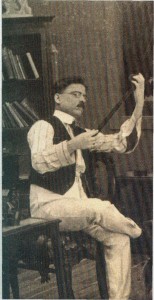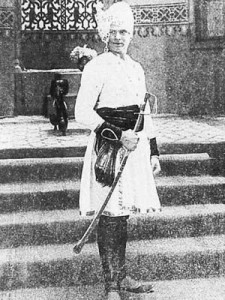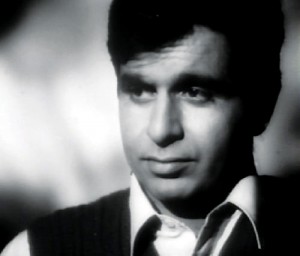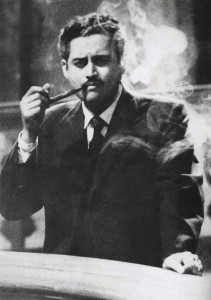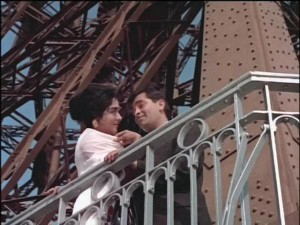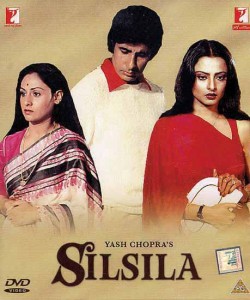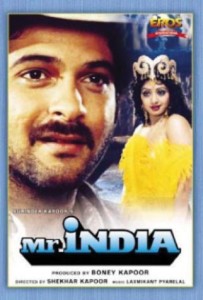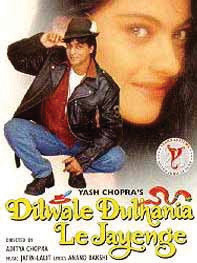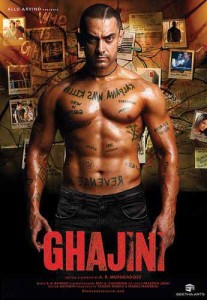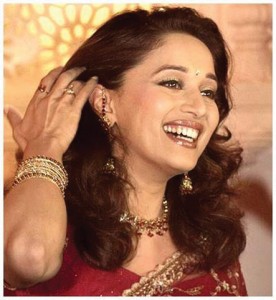 As Indian cinema turns 100, Vatsala Chhibber takes you on a journey through the different ages and milestones in Indian celluloid history
As Indian cinema turns 100, Vatsala Chhibber takes you on a journey through the different ages and milestones in Indian celluloid history
It is common knowledge that Indians have two obsessions: cricket and cinema. Movies empower audiences with the ability to see new places (planets and beings even!), experience a variety of emotions and be a part of other people’s lives. For those three hours, we are collectively transported to another world. Movies can touch, inspire, shock, teach, sadden, sometimes even anger audiences and the Indian film industry has been successfully doing this for 100 years. While the menace of illegal downloading has had a huge impact on the music industry, the movie-going experience is as valued today, if not more. We are as eager today to sit in a dark theatre with a hot tub of popcorn, ready to laugh with Govinda, cheer Sallu-bhai and whistle at Kareena’s item number. There certainly is something magical about the movies.
The diversity of Indian culture is reflected in the films we make. From the glamorous Yash Raj flicks to the over-the-top South Indian action movies and the sliceof- life flicks for ‘multiplex audiences’, Indian cinema is generous and varied in its offerings. We might not be bagging medals by the minute at the Olympics, but Indian cinema has certainly left an indelible mark on the history of celluloid with the quantity and quality of films produced each year.
The Birth of Indian cinema (1912-1921)
Technically, the first Indian movie released in India was Shree Pundalik, a 22 minute long film directed by Dadasaheb Torne. However, since the film was shot by a British cameraman and the negatives of the film were sent to London for processing, the title went to Dadasaheb Phalke’s Raja Hasrishchandra, which told the story of a king who never lied. The film had an all-male cast as no woman was ready to enter this unfamiliar profession. In fact, Phalke even approached prostitutes for the role of the lead actress and even they were unwilling to disgrace themselves by acting in films. This is difficult to imagine, especially today, when thousands of girls endure years of struggle in pursuit of their ‘big screen aspirations’. But back then, a desperate Phalke offered the role of the lead actress to a boy called Salunke, who can perhaps be called India’s first heroine. Other regions soon came out with their cinematic contributions, thus beginning the diverse journey of Indian cinema.
The First Love Story
Bilat Ferat (1921), a Bengali film, was the first Indian love story in Indian cinema. When it was released, the film shocked audiences with its intimate scenes.
The First Women On-Screen
In 1913, Durgabai Kamat became the first woman to act in Indian cinema. After she separated from her husband, she was desperate to make a living to support her daughter. She could either become a domestic servant, a prostitute or an actress. Durgabai dared to be the first actress and Indian cinema and paved the way for generations of future actresses. Her daughter also acted in the film and became India’s first female child star.
Film of the Decade
Lanka Dahan, a mythological film directed by Dadasaheb Phalke, became the first Indian box office hit.
Star of the Decade
Dadasaheb Phalke, who is considered the ‘Father of Indian Cinema,’ laid a strong foundation for the film industry. In his 19 years as a filmmaker, Phalke made 95 movies and 26 short films. Unfortunately, the most successful filmmaker of the silent era was unable to transition to sound and by 1938, Phalke retired from cinema and moved to Nashik.
Controversy of the Decade
Bhakt Vidur was the first film to be checked under the censorship rule for being ‘politically subversive’.
Since no woman considered it moral to act in movies, a boy named Salunke became the first Indian cinema’s first ‘actress’
From Silence to Sound (1922-1931)
During this period, Indian cinema began its transformation into an organised industry, with a steady number of films produced every year. From making 27 films a year in the beginning of the decade, the count escalated to 207 films a year by 1931. Sadly, of the 1200 films made during the silent era, barely 10 are preserved today.
In 1931, sound made its debut in Indian cinema through Ardeshir Irani’s Alam Ara. The inclusion of sound is especially significant in the history of Indian cinema. Sound gave birth to songs, which continue to feature prominently in our films, setting our cinema apart from that of other countries.
The First Film Poster
Baburao Painter designed the first film poster for his film Maya Bazaar (1923), also known as Vatsala Haran. His film Savkari Pash is considered the first attempt at social realism. The film tells the story of a greedy moneylender and his methods of exploiting a peasant family
Movie of the Decade
The first Indian talkie, Alam Ara, starring Master Vithal and Zubeida, was so popular among audiences that the police had to be summoned to handle the crowds. Alam Ara has another first to its credit: ‘black tickets’ were first sold for this film. Owing to the huge demand, tickets were sold for Rs. 5 instead of the official four annas!
Star of the Decade
Master Vithal was the most popular star of the silent film era and therefore was an obvious choice to star in the first Indian talkie, Alam Ara. However, the downfall of the silent era stars, as highlighted in the Oscar winning film The Artist, was witnessed in Master Vithal’s life as well. His poor Hindi speaking skills were revealed in Alam Ara and Vithal went back to doing silent films (and some Marathi films). Like many silent movie stars, he faded into oblivion.
The First Female Filmmaker
in Indian cinema was a woman named Fatima Begum, who released her first movie, Babul-e-Paristan in 1926.
Owing to the huge demand, tickets for Alam Ara were sold for Rs. 5 instead of the official four annas!
Indian Cinema Welcomes Colour (1932-1941)
After the introduction of sound, talkies dominated the movie screens and silent films (and stars) gradually faded into the background. While the talkies ended numerous acting careers, one star who managed this transition easily was Zubeida, the lead actress in Alam Ara. In fact, her career grew immensely after her performance in the first talkie.
Soon, Indian cinema then propelled towards its next milestone, the first film in colour. This period is also saw the rise of regional films and Maharashtra, Punjab and Gujarat added their cinematic offerings to the growing list of talkie films. This decade also witnessed the emergence and rise of various studios such as the Prabhat Film Company, Imperial Film Company, Wadia Movietone and Bombay Talkies.
The First Action Star
This might be hard to believe but the first action star in Indian cinema was an Australian woman popularly known as Fearless Nadia. She starred in several stunt movies, the most popular of them being Hunterwali. Prior to acting in movies, Nadia performed stunts for a circus group.
First Colour Film
Kisan Kanya (1937), produced by Ardeshir Irani was the first colour film that was processed in India
The Birth of Playback Singing
Dhoop Chhaon saw the first use of playback singers. Before this, songs were sung by actors themselves. We shudder to think what damage would be inflicted if we had to listen to Rani Mukerji croon. Thank God for playback singing!
Film of the Decade
Achhut Kanya (1936), starring Ashok Kumar and Devika Rani, told of issues faced by low caste girls in a love story.
Song of the Decade
Main ban ke chidiya ban ke from the movie Acchut Kanya was sung by the actors themselves and was the most popular song of the decade.
Controversy of the Decade
While lip locks had been seen briefly in earlier movies such as A Throw of Dice, the kiss that caused quite a controversy was shared between Devika Rani and Himanshu Rai (who were also a couple off-screen as well) in the movie Karma (1933). The kiss was especially scandalous since it was 4 minutes long!
Star of the Decade
Regarded as the finest actors of Indian cinema, K.L. Saigal was not only adored as an actor and singer; his portrayal of Devdas earned him thousands of fans.
Achhut Kanya was a love story between an ‘untouchable’ girl and a Brahmin boy
Indian Cinema Finds Her Stars (1942-1951)
The 1940s saw the demise of some founding pillars of Indian cinema such as Himanshu Rai, K.L. Saigal and Dadasaheb Phalke. While there were some unfortunate departures, this decade also saw the debut of some prominent film personalities such as Raj Kapoor, Dilip Kumar and Asha Bhonsale. This is also when Indian cinema welcomed its first ‘star’, Ashok Kumar. Dilip Kumar, who was popularly known as Tragedy King, also met with great success during this time through films such as Mela, Andaz and Deedar.
At the beginning of the decade, the film industry suffered a setback due to the shortage of equipment and resources caused by World War II. However, the recovery from this hurdle was quick and by 1946, more than 150 films were produced annually by the Hindi film industry alone.
RK Films is Established
The first family of Bollywood, the Kapoors, claimed their space in the history of Indian cinema when Raj Kapoor established RK Films studio in 1948. The ‘Showman’ delivered his first hit Barsaat in 1949. The image of him and Nargis in the film poster also became the logo for RK films.
First International Award
Neecha Nagar (1946) won the prestigious Grand Prix du Festival International du Film (Best Film) award at the first Cannes Film Festival.
Movie of the Decade
Kismet, starring Ashok Kumar and Mumtaz Shanti, is considered one of the first blockbuster hits of Indian cinema. The film was so popular that it ran at a theatre in Kolkata for three years. Kismet was the first film with an anti-hero (a con man) in the lead and also introduced the concept of ‘double role’ to Indian films.
Song of the Decade
The mellifluous Lata Mangeshkar’s song Aayega Aanewaala from the movie Mahal became the first of many hits to be delivered by her.
Star of the Decade
Fondly called Dadamoni by his fans, Ashok Kumar is regarded as the first star of Indian cinema. He delivered many memorable performances in movies such as Mahal (which was the first film based on the subject of reincarnation).
Controversy of the Decade
One of the biggest scandals of the 1940s was the affair between Nargis and Raj Kapoor. The two were a popular on-screen couple, acting together in 24 movies. However, Raj Kapoor was a married man and refused to leave his wife for Nargis. This ended the affair and Nargis went to marry Sunil Dutt, who allegedly saved her life during the filming of Mother India.
One of the biggest scandals of the 1940s was the love affair between Nargis and Raj Kapoor
The Golden Age of Indian Cinema (1952-1961)
This decade is regarded as the golden age of Indian cinema as it produced some of the biggest stars, filmmakers and critically acclaimed films. Guru Dutt, Raj Kapoor, Nargis, Bimal Roy, Meena Kumari, Madhubala, Dilip Kumar, etc made their historic contributions to Indian cinema during this period. Filmmakers experimented with styles, plots and preferences and the result was an industry which steadily produced quality entertainment. From the commercial films of Raj Kapoor to the brooding social commentary of Guru Dutt, these diverse genres were widely accepted by audiences.
‘Art’ films also thrived during this period, with Satyajit Ray’s monumental Pather Panchali and Bimal Roy’s Do Bigha Zamin finding national and international acclaim. Along with historic films, historic couples were also formed during this time, such as Nargis and Sunil Dutt, Kishore Kumar and Madhubala and Dev Anand and Suraiya.
First Indian Movie Nominated for an Academy Award
Mother India became India’s first submission to the Foreign Language Film category at the Academy Awards. The film also secured a nomination.
First Comedy Film
Albela, the first comedy film in India, was directed by Bhagwan Dada. However, it is saddening to know that the man who gave Indian audiences their first feature-length laughter session ultimately ran out of successes and moved to a chawl, accepting petty roles to make a living.
Film of the Decade
100,000 people gathered outside Maratha Mandir to buy tickets for the opening show of Mughal-e-Azam! The film managed to earn Rs. 40 lakhs in its first week. Well, the film’s earnings are certainly well deserved as the movie took eleven years to complete!
Star of the Decade
Madhubala (meaning a woman of honey) is one of the most beautiful women to grace Indian cinema. During this period, she had a string of hits attched to her name and was also offered a role in a movie by an American filmmaker. But this enigmatic beauty concealed a tragic secret from the world for many years. She suffered from a serious heart disease and succumbed to it at the young age of 36.
Controversy of the Decade
The hardships that Madhubala’s characters faced on screen were faced by her in real life as well. Her affair with Dilip Kumar came to an abrupt end when her father forbade her from travelling to Bhopal with him for a shoot. The result was a court case against her by disgruntled filmmaker B.R. Chopra and the end of her love affair. She later married the popular playback singer Kishore Kumar.
Song of the Decade
Humour and patriotism combined to make the popular song, Mera joota hai Japani from the movie Shree 420.
This song has retained its popularity and relevance in today’s globalised world.
100,000 people gathered outside Maratha Mandir to buy tickets for Mughal-e-Azam!
The Largest Producer of Films (1962-1971)
Indian cinema in the 1960s was in the middle of a transition. From the new age of directors in the 1950s, the film industry progressed into a new era. One interesting development in this decade was the first use of international locations. Raj Kapoor’s Sangam was the first film to be shot abroad, in places such as Paris, Venice and Switzerland. This trend is still followed by filmmakers to date who travel far and wide to find the most picturesque locations, especially for film songs.
Indian cinema also began travelling to foreign locations, a trend that is still prevalent. The theme of nationalism was prevalent across many films in 1960s due to the war being fought against Pakistan.
The First One-Actor Film
The legendary Sunil Dutt directed, produced and starred in the movie Yaadein, which entered the Guinness Book of World Records for the ‘fewest actors in a narrative film’
Movie of the Decade
Guide, starring India’s Gregory Peck – Dev Anand, was the first film to win all the major Filmfare Awards (Best Movie, Best Director, Best Actor and Best Actress).
Star of the Decade
The superstar status that was enjoyed by Rajesh Khanna in the late 1960s remains unmatched till date. He still holds the record for the most number of consecutive hits (15 films between 1969 and 1971). Women were crazy about him, marrying his photographs and gathering in large groups to catch a glimpse of him. The public obsession heightened to such a degree that Rajesh Khanna required police protection from large, uncontrollable crowds.
The Largest Producer of Films
In 1971, India officially became the largest producer of films in the world with 433 films and continues to hold that title today.
Controversy of the Decade
The feisty Sharmila Tagore was the first Indian actress to sport a bikini on the big screen, a move that was followed by several actresses such as Zeenat Aman and Parveen Babi. While Tagore shocked conservative audiences by posing in a bikini for a film magazine, it also earned her the title ‘Sex Symbol’.
Song of the Decade
Aradhana was one of the biggest hits of the 1960s and was the vehicle of the much-loved song Mere sapno ki rani.
The feisty Sharmila Tagore was the first Indian actress to sport a bikini on the big screen
Rise of the Masala Films (1972-1981)
In the 1970s, Hindi cinema entered a new phase, which is now called the age of the ‘masala fims’. Angry heroes, evil villains, violent fights, hot babes and many twists in the tale – films in the 70s were unabashed entertainers. This format was carried forward through several decades and in some ways still exists today (Main hoon na, Dabangg).
The genre of romantic films also blossomed during this era with most leading actors showcasing their romantic sides such as Amitabh Bachchan in Kabhie Kabhie, Rishi Kapoor in Bobby and Dharmendra in Dream Girl.
The Horror Genre is Established
Technically, the first horror film in Indian cinema was Mahal which released in 1949. But the Ramsay brothers introduced gore to horror films in 1972 with Do Gaz Zameen ke Neeche, the first of their many spooky offerings.
First Bollywood Star on the Cover of Time Magazine
Parveen Babi was the first Indian actor to be featured on the cover of Time magazine. But at the peak of her career, Parveen disappeared from the city and returned years later, an unrecognizable version of her former self. Her last years were lonely and she was found in her apartment three days after her death.
Film of the Decade
When Sholay released, the response to the film was unexceptional. But soon, audiences started praising the film and through word of mouth publicity, the movie became one of the biggest hits of all time. The character of Gabbar became so popular with audiences that he was asked to endorse children’s biscuits! This is the first time a villian was used to advertise any product.
Star of the Decade
With the success of his film Zanjeer, Amitabh Bachchan became the ‘Angry Young Man’ of Indian cinema. But he proved his versatility as an actor through his laughter-inducing antics in Amar Akbar Anthony and romantic shayaris in Kabhie Kabhie.
Controversy of the Decade
In the early 1980s, news of a secret affair between Amitabh and Rekha shocked the industry. Ironically, there last film together was Silsila, where Amitabh and Jaya Bachchan play a married couple and Rekha, ‘the other woman’. Later, Rekha married an industrialist, Mukesh Aggarwal. Tragically, her new husband committed suicide a year later.
Song of the Decade
The song that best depicts the mood of the 1970s, Dum maro dum from the movie Hare Rama Hare Krishna became a cult song, especially for the youth.
A Decade of Experiments (1982-1991)
This decade can almost been seen as a transfer of power from the stars of the 1970s to the Khans, who made their debuts during this period. While many memorable films have been produced in this decade, there have also been several disasters. Uninspired scripts, run-of-the-mill sequences and terrible fashion dominated many of these films.
This was also when women directors found space and recognition in Indian cinema. Movies such as Salaam Bombay directed by Mira Nair, Chashm-e-Baddoor directed by Sai Paranjpye and 36 Chowringhee Lane directed by Aparna Sen were appreciated by critics and audiences.
First Oscar for India
In 1983, India won her first ever Oscar through Bhanu Athaiya. She was awarded an Academy Award for best Costume Design for Richard Attenborough’s Gandhi.
First 3D Film
My Dear Kuttichathan, a Malyalam movie, became the first film in India to use 3D technology. The film was later dubbed in Hindi under the name Chhota Chetan.
Movie of the Decade
Sooraj Barjatya’s Maine Pyaar Kiya was one of the biggest hits of the decade which also catapulted Salman Khan’s acting career. The music of the film also contributed to its popularity with songs like Dil deewana and Kabootar ja ja ja.
Star of the Decade
South Indian actress Sridevi started acting at the age of four and made her Bollywood debut in the 1970s. But the peak of her popularity came in the 1980s when she delivered some of the biggest hits of the decade. such as Nagina (where she transformed into a snake), Mr India, Chaalbaaz and Lamhe. Between 1985 and 1992, Sridevi was the highest paid actress in Hindi cinema.
Controversy of the Decade
Amitabh might have found success in acting but he struggled in his political career. In 1984, Amitabh Bachchan decided to enter politics in support of his family-friend, Rajiv Gandhi. But he soon resigned from politics after his name was included in the Bofors scandal. After a tiff with the media, leading film magazines such as Stardust decided to enforce a media ban against Amitabh bachchan for 15 years! Amitabh responded to this by banning the press from entering his film sets until the year 1989.
Song of the Decade
The song that had the nation brushing up their counting skills, Ek do teen from the movie Tezaab was immensely popular. Madhuri’s dancing abilities were highlighted in the song and is one of her best known performances to date.
Uninspired scripts, routine sequences and terrible fashion dominated many of films in the 1980s
The Rule of the Khans (1992-2001)
The three Khans – Shahrukh, Salman and Amir – found success in this decade. Shahrukh Khan was the romantic hero with hits like Dil Toh Pagal Hai and Kuch Kuch Hota Hai. Amir Khan came to be known as a perfectionist with his quality performances in Rangeela and Dil Chahta Hai. And Salman created his own base of loyal fans who admired his work in Hum Aapke Hain Kaun and Hum Dil De Chuke Sanam.
But someone who proved you don’t need to carry the name Khan to make it big in Bollywood was Hrithik Roshan. The success of Kaho Naa Pyaar Hai made him the heartthrob of the nation. Girls swooned over his unique style and boys tried to mimic his dance moves.
The Longest Running Film in Indian Cinema
People can still watch Simran and Raj at Maratha Mandir theatre in Mumbai, making Dilwale Dulhaniya Le Jaayenge the longest running Indian movie of all time.
First Film on Homosexuality
Deepa Mehta’s bold and candid portrayal of a lesbian relationship in Fire was the first of its kind in Indian cinema. Conservative groups stronglly opposed the film, calling it “pornographic, immoral and against Indian culture”.
Film of the Decade
Ashutosh Gowariker’s Lagaan became the second Indian film to be nominated for an Oscar. Though the film did not win the golden statue, Lagaan has been included in Empire magazine’s list of 100 Best Films of World Cinema.
Star of the Decade
SRK, as he is popularly called, managed to secure the title ‘King Khan’ with his series of hits. However, this decade also proved that there is enough space in Bollywood for three superstars to find success simultaneously, if not peacefully.
Controversy of the Decade
The song Choli ke peeche kya hai from the movie Khalnayak sirred quite a debate on its release. The song’s suggestive lyrics, exaggerated thrusts and sighs scandalized the nation. Soon the debate escalated to new heights when the song was discussed in the Indian Parliament as well!
Song of the Decade
Shahrukh Khan, Mallika Arora Khan’s hips and a moving train all contributed towards making Chaiyya Chaiiya a hit song. The dance moves from the song soon caught on with the masses, though they were mostly performed on even ground.
The song Choli ke peeche kya hai was discussed in the Indian Parliament
Indian Cinema Makes Her Billions (2002-2012)
Bigger budgets, bigger stars, international technology; movies in this decade have been really have been pampered. But the returns on investment have been explosive with movies like Ek Tha Tiger and 3 Idiots earning more than 300 crores each! Remakes and remixes found prominence in this decade though they were not always guaranteed success (Don, Agneepath).
While the scale of blockbusters got bigger, the multiplex culture also provided a space for smaller films to find their audiences, such as Vicky Donor and Paan Singh Tomar. New story lines and fimmaking techniques entered Indian cinema during this time and met with success due to the changing preferences of audiences in the country.
Highest Paid Actor in Asia
The south Indian superstar Rajnikanth dethroned Jackie Chan and became the highest paid actor in Asia after being paid Rs. 26 crore (phew!) for his role in Sivaji.
The Most Expensive Film
After spending US$30 million, Shahrukh Khan’s superhero flick Ra One became the most expensive movie in the history of Indian cinema. Oh, and it also cost Shirish Kunder a slap in the face. Now that’s priceless.
Movie of the Decade
3 Idiots is not only the biggest hit of the decade, but also the highest grossing film of all time. The film was also in the news for the public feud between Chetan Bhagat and the makers of the fim.
Star of the Decade
Since the jury is still out on the battle of the Khans, we’d like to give this title to another star who has made invaluable contributions to Indian cinema, not through his acting, but through his music: A.R. Rahman. This ‘Mozart of Madras’ (as he is fondly called) is one celebrity who has managed to remain grounded, humble and focused on his art. Now, that’s a real star.
Controversy of the Decade
Looks like the title of ‘Angry Young Man’ has been transferred to Shahrukh Khan. Recently, King Khan has been at loggerheads with an alarmingly large number of people. First, there was the highly publisized spat between him and Salman Khan at Katrina Kaif’s birthday bash. Then there was the abusing session at the IPL finals and the Shirish Kunder slap. There are also reports of a troubled marriage due to his rumoured affair with Priyanka Chopra.
Song of the Decade
This decade has been filled with ‘Munnis’, ‘Sheilas’ and ‘Chammak Challos’, all making for catchy but forgettable songs. We think the real find of the decade is Pakistani singer Atif Aslam, whose fresh voice was discovered with his song Woh Lamhe.
Movies like Ek Tha Tiger and 3 Idiots have managed to earn more than Rs. 300 crores each
Volume 2 Issue 4





















